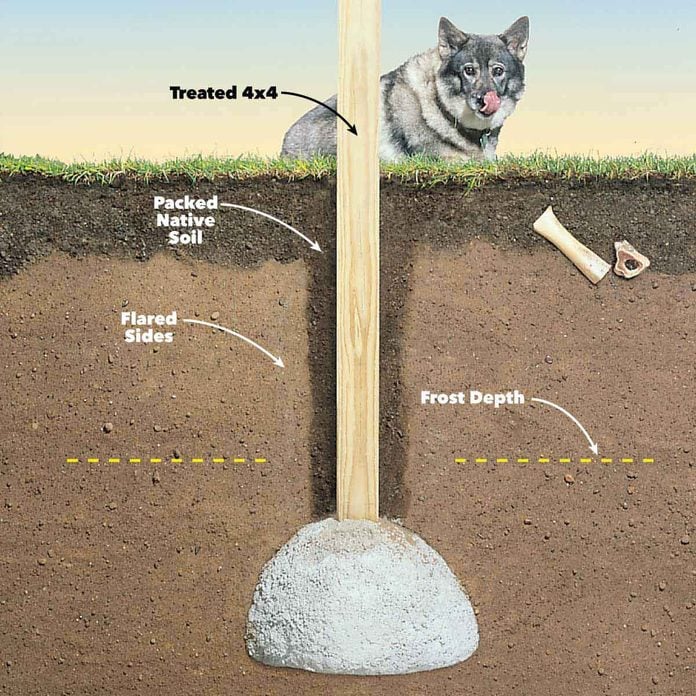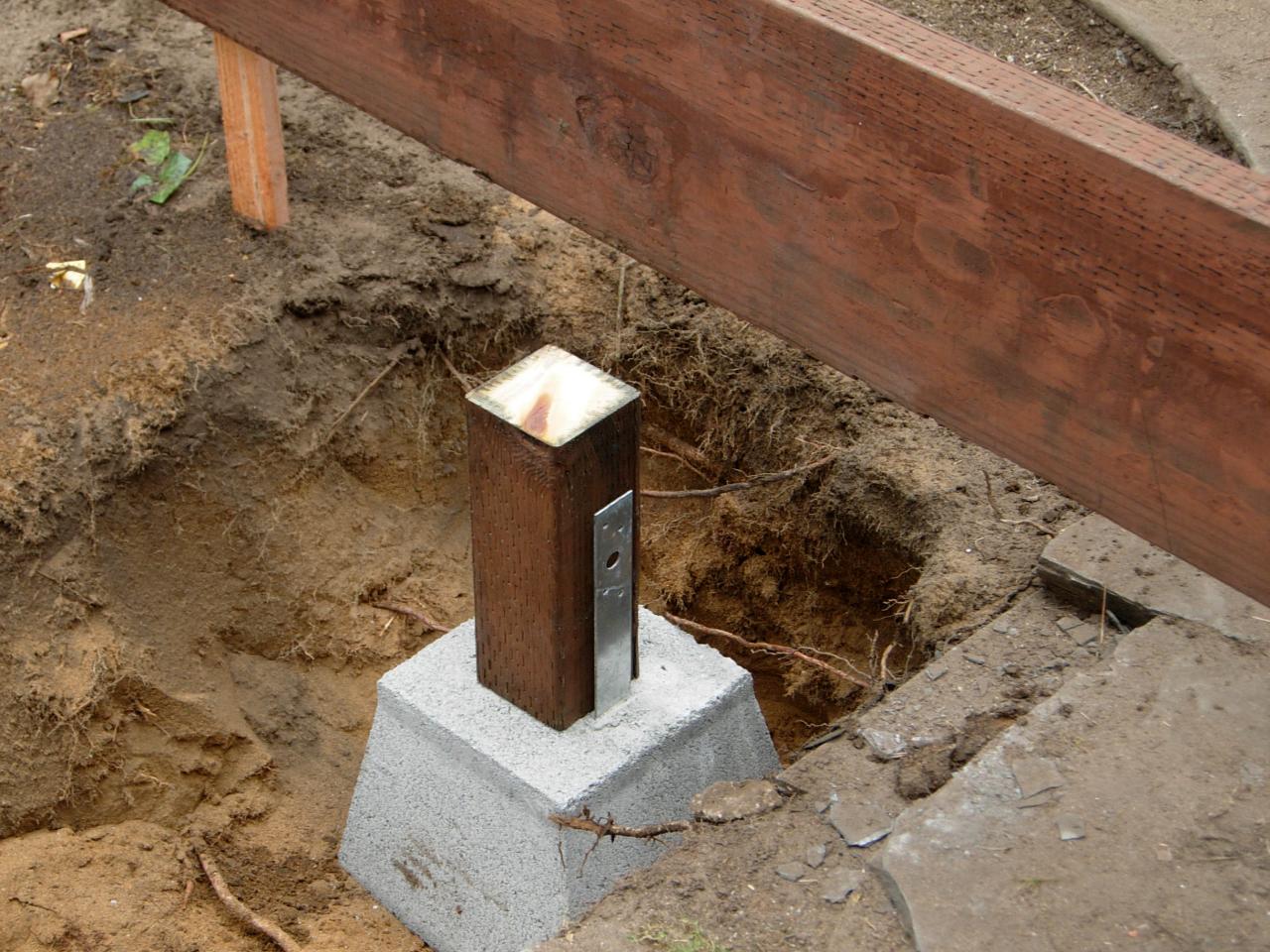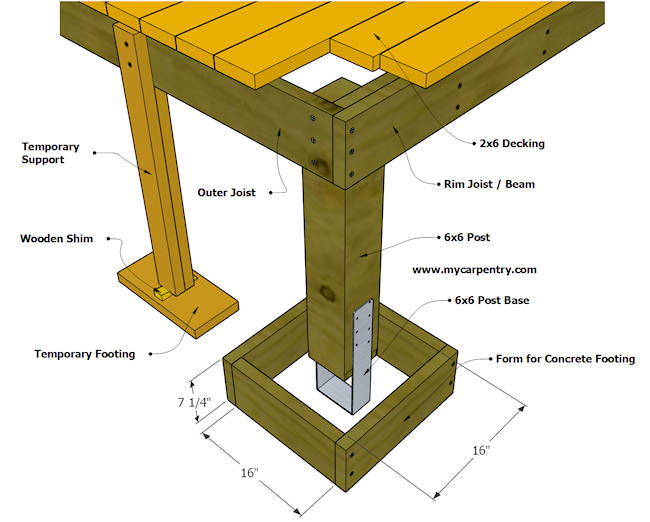Deck Footings 101: Browsing the Basics for a Stable and Resilient Deck
Guarantee Stability and Durability With Correctly Installed Deck Footings
Deck grounds may not be the most glamorous element of deck construction, but they play a vital role in making certain security and long life. In this conversation, we will explore the importance of proper deck grounds, variables to think about during installation, various kinds of footings available, step-by-step installment overview, and maintenance tips for making certain durable grounds.

Relevance of Proper Deck Footings
Why are correctly set up deck footings vital for the security and long life of your deck? Deck footings are the foundation on which the deck rests, moving the tons from the deck to the ground.
To start with, properly installed deck footings disperse the weight of the deck equally, protecting against any uneven settling or sinking. This is particularly crucial in areas with unsteady dirt, as it aids to mitigate the danger of the deck collapsing or shifting. Furthermore, well-installed grounds ensure that the deck stays level, protecting against any kind of architectural damages that can take place when a deck becomes uneven.
Secondly, properly installed grounds provide a strong support for the deck, protecting against too much motion and persuade. This helps to keep the architectural integrity of the deck, decreasing the danger of injuries or crashes. It additionally decreases the wear and tear on the deck, allowing it to endure the components and normal usage for a longer time period.
Elements to Think About for Deck Footing Installation
When installing deck footings, there are numerous vital variables to take into consideration for correct installment. Various dirt kinds have various load-bearing capabilities, so it is vital to perform a dirt examination to make certain the grounds can sustain the weight of the deck and its passengers. By taking right into account these aspects, you can make certain the correct setup of deck footings and enjoy a stable and durable deck.
Sorts Of Deck Footings to Pick From
There are numerous different kinds of deck grounds readily available for you to select from. Each kind has its own benefits and negative aspects, so it's vital to consider your details requirements and the conditions of your deck prior to deciding.
One usual kind of deck footing is the concrete footing. This involves digging openings in the ground and putting concrete right into them to produce a solid foundation. Concrete footings are durable and provide excellent security, making them ideal for decks in locations with difficult soil problems or high wind lots.
One more choice is the helical pier footing, which is composed of a steel shaft with helical plates that are screwed right into the ground. These footings fast to install and can be made use of in numerous soil types, consisting of sandy or clay dirts. They are also flexible, permitting for simple leveling of the deck.
Sonotube grounds are one more popular choice. These grounds are created by positioning a cardboard tube in an opening and filling it with concrete. Sonotube grounds are fairly easy to mount and offer adequate security for smaller decks or in locations with much less requiring dirt conditions.

When picking the sort of deck footing, it's critical to think about variables such as soil problems, deck size and weight, neighborhood building regulations, and individual choices. By choosing the proper ground kind, you can make sure the security and durability of your deck.
Step-by-Step Guide for Installing Deck Footings

Identify the area: Begin by marking the specific position of each ground making use of stakes and string (Deck Footings). Take into consideration any regional structure codes or regulations relating to trouble distances
Dig the holes: Utilize a blog post opening digger or an auger to dig the holes for the footings. Normally, a deepness of at the very least 36 inches is recommended for stability.
Level the holes: Make sure that the bases of the openings are degree (Deck Footings). This can be attained by utilizing a level or a straight board across the top of the holes
Add gravel: Location a layer of crushed rock at the end of each opening to boost explanation drainage and prevent the footing from sinking into the soil in time.
Place the footing types: Place the footing develops into the holes, ensuring they are centered and level. Use stakes to secure them in position.
Mix and put concrete: Adhere to the guidelines on the concrete mix bag to prepare the concrete. Put the concrete right into the ground types, loading them totally.
Smooth the surface: Use a trowel to smooth the surface of the concrete and remove any air pockets. Allow the concrete to cure according to the producer's instructions.
Maintenance Tips for Long-lasting Deck Grounds
Correct maintenance is crucial for making sure the longevity and security of deck footings. By consistently examining and keeping your deck footings, you can protect against damage and possible security threats.
Routine cleansing is also necessary for maintaining deck grounds. Dust, debris, and plants can accumulate around the footings, which can bring about moisture buildup and decay. Cleansing the grounds routinely, using a brush or a stress washing machine, can help avoid these concerns and expand the lifespan of your deck.
Along with cleansing, it is necessary to maintain the area around the footings clear of any type of blockages. Stay clear of stacking items against the footings or enabling plants to expand also near them. These blockages can trap moisture and cause the footings to degrade gradually.
Last but not least, normal resealing of the grounds is look here recommended to protect them from moisture and other environmental elements. Applying a water-proof sealer can aid protect against water damages and expand the life-span of the grounds.
Verdict
In verdict, correct installment of deck grounds is critical for ensuring stability and longevity of your deck. Factors such as dirt kind, lots capacity, and neighborhood building regulations require to be taken into consideration when picking the appropriate kind of deck footings. Complying with a step-by-step guide for installation and regular maintenance will certainly assist to make sure the footings remain durable and long lasting.
In this discussion, we will explore the importance of proper deck grounds, aspects to think about Discover More Here during installment, various kinds of footings available, detailed setup guide, and maintenance pointers for making certain resilient footings. Deck grounds are the structure on which the deck rests, transferring the lots from the deck to the ground.One typical type of deck ground is the concrete footing. Put the footing forms: Put the footing creates into the openings, guaranteeing they are centered and degree.In final thought, appropriate installment of deck grounds is vital for making sure stability and long life of your deck.